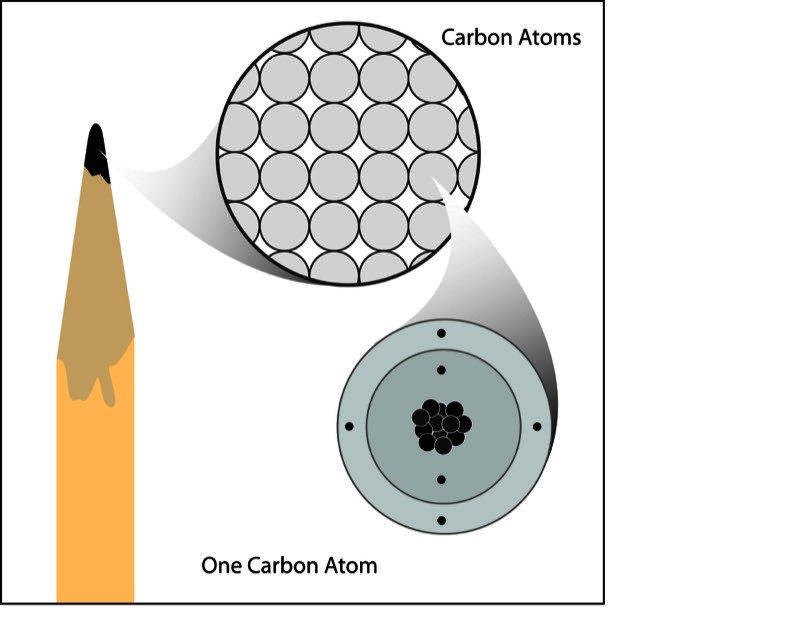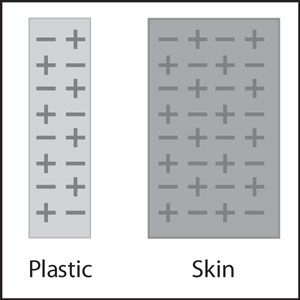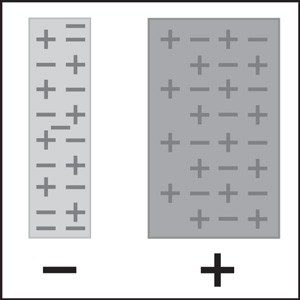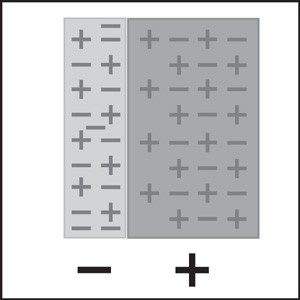Lesson 4.1: Protons, Neutrons, and Electrons
Accompanying Lesson Plan: Lesson 4.1: Protons, Neutrons, and Electrons
Image
Pencil Zoom
- The “lead” of a pencil is actually made of a substance called graphite which is made of carbon atoms.
- The picture shows a close-up of one carbon atom.
Interactive
Protons & Electrons
- Protons have a positive charge. Two protons repel each other.
- Electrons have a negative charge. Two electrons repel each other.
- A proton and an electron have opposite charges and attract each other.
Interactive
Hydrogen Atom
- A hydrogen atom has one proton as the nucleus and one electron in the region outside the nucleus.
- The electron and proton are attracted to each other. This attraction holds the atom together.
- It is not possible to locate the exact position of an electron, but the electron cloud shows the region where an electron is most likely to be.
Image
Charged Plastic and Hand
- When the plastic strip is rubbed on the skin, electrons from the skin are transferred to the plastic giving the plastic a negative charge.
- When the plastic is moved near the desk, electrons in the desk are repelled by the negatively charged plastic.
- This leaves an area of positive charge in the desk near the plastic.
- The negative plastic and the positive area of the desk attract.
Video
Balloon and Water
- When the balloon is rubbed on hair or clothes, electrons move onto the balloon giving it a negative charge.
- When the negatively charged balloon is brought near the water, electrons are repelled and move away from the balloon, leaving a positive area of the water near the balloon.
- The negatively charged balloon and the positive area of the water attract.




